When Clayton Christensen wrote the 'Innovators Dilemma', he told a story of a fast-food chain who wanted to boost Milkshake sales.
Analysis of sales discovered that 40 per cent of their customer purchases were first thing in the morning, by commuters who ordered takeaway.
The finding puzzled researchers. What was driving these early morning purchases?
Customers weren’t buying the milkshakes to quench their thirst, nor were they looking for a sugar hit. Instead, they found that Milkshakes made a convenient & fun distraction for people making a long commute to work. It just so happened that it made a good breakfast replacement as well.
Understanding this, the fast-food chain introduced a series of thicker milkshakes, which lasted longer and had chunks of fruit to make them more interesting. This simple menu change was extremely popular with customers and delivered a 700% revenue increase.
Focusing on the job that your customer is trying to get done makes good business sense. The fast-food chain had previously tried to understand the customer by looking at their demographics and attributes, but these attributes gave no clear insight into why they decided to buy the milkshakes.
In Clayton Christensen’s 2016 HBR article, Know your customer’s jobs to be done, he illustrates this point using himself as an example:
“Clayton Christensen. He’s 64 years old. He’s six feet eight inches tall. His shoe size is 16. He and his wife have sent all their children off to college. He drives a Honda minivan to work. He has a lot of characteristics, but none of them has caused him to go out and buy the New York Times.”
Understand the real reason for purchase
So the recipe is pretty simple, right? Thoroughly understand your customer's workflow, identify pain points and opportunities, and then design a solution which is better, or cheaper than the competition.
Starting with the job to be done is an effective way to keep the customer objective in front of mind when thinking about potential solutions.
"The jobs-to-be-done point of view causes you to crawl into the skin of your customer and go with her as she goes about her day, always asking the question as she does something: why did she do it that way?”, Clayton Christensen
Another way to think of the job to be done is the process that a consumer navigates whenever they try to change their current situation to a future better version of themselves. This job cannot be achieved due to an unsolved pain or gain that is causing friction for the user, which creates product opportunities.
In the milkshake example, the consumers had a clear job to be done - consume breakfast during their long commute. They also wanted to solve the pain of their boring drive.
But the purchase decision wasn’t the only step they took. First, they needed to identify that they had a need and then identify the requirements for their purchase. They had to think about where to source breakfast options and evaluate their product choice. Would they choose a muffin or a milkshake? Which option would make less mess in their car?
Regardless of its complexity, every job requires the customer to perform several sub-tasks. These tasks form a process that the customer will perform every time they complete the job.
Sometimes these steps become so routine that they become subconscious. In these cases, interviewing the customer alone will not be enough to uncover the full process completed.
One effective activity that can help you dig deeper into your customer’s workflow to uncover these additional steps is job mapping.
Uncover workflows with job mapping
As opposed to story mapping, which focuses on the solution, a job map is a tool to systematically examine customers job-to-be-done, and analyse the customer workflow for innovative opportunities.
The job map can be completed either together with a customer, or after observation/diary studies of the customer completing their job.
“The Job Map turns the fundamentals of Jobs-to-be-Done thinking into an innovation practice. This framework enables companies to deconstruct a job that customers are trying to get done into specific process steps. The resulting job map provides a structure that makes it possible to capture all the customer’s needs related to the core functional job and to systematically identify opportunities for growth.”
The aim is to discover what the customer is trying to get done at different points in executing a job and what must happen at each juncture for the job to be carried out successfully.
The job map breaks each activity into 8 distinct common steps to help identify the sub-tasks performed:
1. Defining what the job requires
2. Identifying and locating needed inputs
3. Preparing the components and the physical environment
4. Confirming that everything is ready
5. Executing the task
6. Monitoring the results and the environment
7. Making modifications
8. Concluding the job
The job map is a fantastic way to break down the job, identify all the tasks, and find opportunities for product or service innovation.
One of the most common failures I witness is people segmenting their audience by demographics instead of the job they are trying to perform.
Segmenting in broad demographics ultimately leads to a product launch targeting a much bigger audience than is sustainable. Broad audiences also make product discovery extremely difficult, as it relies on customer interviews, hopeful of stumbling on a piece of wisdom.
I don’t want you to become one of the 90% of new products that fail, Innovation doesn’t need to be difficult. Along with job mapping, there are powerful tools and methods which can help unlock your thinking and minimise your risk. Enable your customer to complete their job and you’ve gone a long way to finding success.

